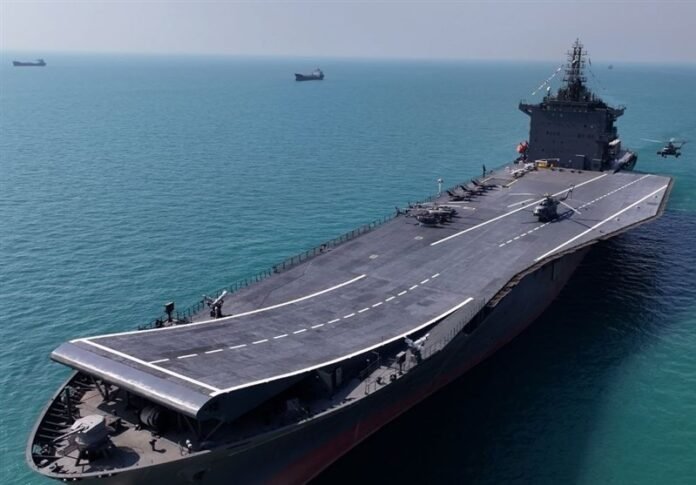Tel Aviv: Iran has announced that its first drone carrier is operational. According to the Iranian Tasnim news agency the official ceremony was held on February 6 in the Bandar Abbas port.
The news agency reports that the commander of the Islamic Voluntary Guard Corps (IRGC) Navy Commander Rear Admiral Alireza Tangsiri stated that the addition of the vessel to the IRGC Navy fleet is a significant step in enhancing the defensive capabilities and deterrence of the Islamic Republic of Iran in distant waters and in safeguarding the nation’s national interests.
According to the commander, the Martyr Baqeri drone carrier is capable of carrying several squadrons of unmanned aerial vehicles, launching and landing unmanned fighter jets, deploying various reconnaissance and combat drones, launching and recovering various light and fast combat vessels, as well as carrying and deploying various combat and support helicopters.
The commander added that the vessel serves as a mobile maritime platform for conducting drone and helicopter missions across the oceans. “Its ability to navigate in seas up to force 9 (oceans) and an operational range of 22,000 nautical miles (offshore) enables it to operate and conduct missions for up to a year without needing to refuel in distant waters,” the officer added.
The Martyr Baqeri Drone Carrier features a 180-metre-long runway and is equipped with facilities for fueling and refueling drones, marine vessels, and helicopters, short and medium-range air defence systems, intelligence and control tower equipment, capabilities for carrying and deploying various types of drones, guided submersibles, the ability to detect all sorts of electronic signals, comprehensive electronic warfare capabilities, long-range surface guns and weapons, long-range surface cruise missiles, and the capability to counter various small drones and air defense missiles, Rear Admiral Tangsiri said.
Israeli sources said that the new Iranian vessel will enhance the danger posed by the Iranian large drones arsenal.
The Ukraine war has many effects. Some of these effects caused by the ongoing war are still not fully understood. But one effect is clear and worrying. This war helps Iran build a very advanced drone industry.
Since the war broke out on October 7, 2023 the Hezbollah in Lebanon and the Houthi rebels in Yemen have used a large number of armed drones weapon systems that proved their effectiveness in the ongoing war.
With no effective air force, the Iranians have built a big drone industry to have another way of hitting targets in Israel and the Gulf. Israeli defence sources said that the Iranians are sending drones to Russia. the shipments include different types of drones.
Senior Israeli expert on drones, Tal Inbar told Raksha Anirveda that the Iranians have built a very big, very advanced drone industry.
According to Israeli sources, the Iranian drone industry was developed using imported parts that were bought in various nations by a number of “Straw” companies to bypass the international sanctions. “They have developed some advanced armed drones that have been unveiled recently.”
As an example, Tal Inbar pointed to the Ababil 5. “This drone is about 5 metres long and has a wingspan of 7 metres.”
According to the Israeli expert, unlike the heavy industry required to produce armoured platforms and ballistic missiles, drones frequently rely on civilian components that can be obtained even online. As a result, the Iranian drone industry expanded quickly.
Israeli sources also said that some of the Iranian drones have been manufactured based on reverse engineering of American and Israeli drones that have been shot down in Iranian airspace. International sanctions do not allow them to export weapon systems so they have decided to establish assembly and production lines in different countries. They send their experts and they manage to use available technologies to manufacture weapons that Tehran then exports to its allies around the world.
-The writer is an Israel-based freelance journalist. The views expressed are of the writer and do not necessarily reflect the views of Raksha Anirveda

















